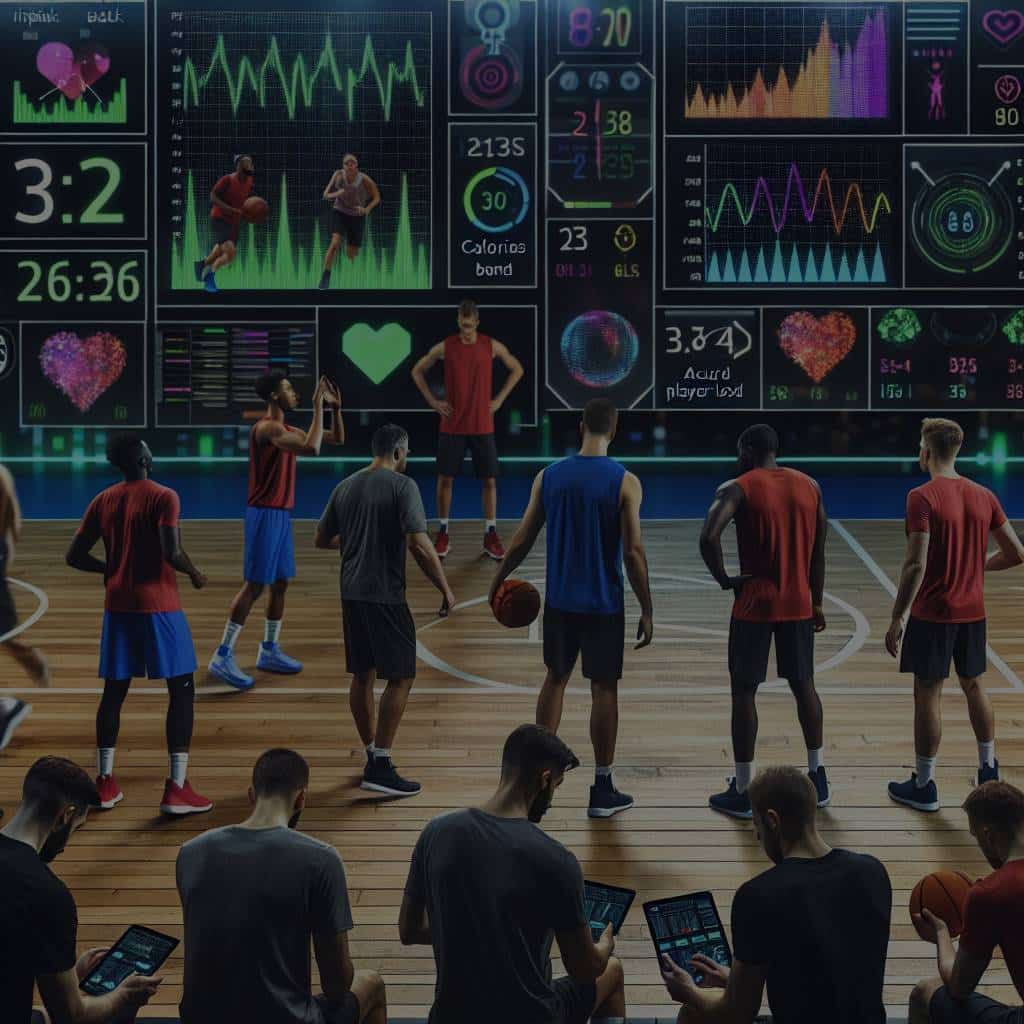How Can Technology Assist Coaches in Monitoring Player Load During Basketball Practices?

The world of sports is no stranger to the transformative power of technology. The use of data and technology has invaded the courts, tracks, and fields, revolutionizing the way athletes train and perform. In particular, basketball teams are increasingly relying on data and technology to enhance player performance and prevent injuries. A critical aspect of this technological revolution in sports is the ability to monitor player load during practices.
Player load is a measure of the stress placed on a player during a game or practice. It is a crucial aspect of training as it helps coaches determine the optimal training load for each player, reducing the risk of injury and improving overall team performance. In this article, we’ll delve into how technology is assisting coaches in monitoring player load during basketball practices.
In the same genre : What’s the Impact of Photobiomodulation Therapy on Muscle Recovery for Athletes?
The Importance of Monitoring Player Load
Monitoring player load during basketball practices is of paramount importance for coaches, athletes, and scholars interested in sports performance. By tracking and analyzing player load, coaches can make informed decisions about player training and recovery.
It is particularly important in basketball, a sport characterized by high-intensity intermittent efforts, which can lead to significant physical stress on the player. Overtraining or undertraining can both lead to suboptimal performance and increased risk of injury.
Also read : How to Safely Increase Flexibility in Junior Ballet Dancers Who Also Practice Athletics?
Monitoring player load allows coaches to strike the right balance between pushing their players towards maximum performance and avoiding potential harm. In addition, it aids in identifying players at risk of injury, enabling early interventions to keep athletes healthy and in top form.
How Technology is Changing Player Load Monitoring
In the past, monitoring player load was largely manual and based on subjective observations. However, technology has significantly improved the accuracy and speed of player load monitoring. Tracking devices, wearable sensors, and advanced software are now extensively used in basketball to provide real-time data on player load.
These technologies can track a variety of parameters, including the player’s heart rate, distance covered, speed, acceleration, and more. Furthermore, some devices can even monitor the biomechanical load on specific parts of the body, offering insights on the body’s response to the game’s physical demands.
This wealth of data can then be analyzed using sophisticated software, providing coaches with actionable insights into player load. This real-time monitoring and immediate feedback enable coaches to make immediate adjustments to training schedules based on the player’s physical condition and load capacity, thereby optimizing player performance.
Practical Applications of Technology in Player Load Monitoring
In basketball, several technologies are being used to monitor player load. For instance, GPS tracking devices worn by players can measure the distance covered, speed, and intensity of their movements. This data can be invaluable in understanding the physical strain a player experiences during practice or a game.
Wearable technology like heart rate monitors and accelerometers provides additional data points. They can measure the physiological load on players by tracking heart rate variability, caloric expenditure, and recovery times.
In addition to these, some teams are incorporating the use of video tracking systems. These allow for in-depth analysis of player movements, helping coaches to identify patterns and make informed decisions about player positioning and tactic adjustments.
The Future of Player Load Monitoring in Basketball
As technology continues to advance, the future of player load monitoring in basketball looks promising. With the proliferation of artificial intelligence and machine learning technologies, the data collected during practices and games can be analyzed in even more depth, providing coaches with unprecedented insights into player load and performance.
Emerging technologies such as virtual reality and augmented reality are also set to play a role in player load monitoring. They could potentially allow for simulated game scenarios, giving coaches a deeper understanding of a player’s load capacity in different game situations.
Moreover, predictive analytics could assist in preventing injuries by predicting players’ injury risk based on their load data. This would allow for personalized training programs, further enhancing player performance and longevity in the sport.
Remember, the key to successful player load monitoring is not only having access to data but knowing how to interpret and apply it. With the help of technology, coaches are now better equipped than ever to monitor player load during basketball practices, optimizing performance, and reducing the risk of injuries.
Google Scholar and Data Analytics: A New Age for Load Monitoring
In the current age of technology, the role of data analytics in the sports industry cannot be understated. Data analytics provides a scientific approach to accessing, managing, and interpreting vast amounts of data. In basketball, this is becoming increasingly pivotal for load monitoring. Coaches and their teams can now turn to platforms such as Google Scholar to access studies that provide insights into the best practices for load management.
Real-time monitoring devices and wearable technologies are at the core of this technological shift. They provide a plethora of metrics that gauge both the internal and external load experienced by basketball players. However, the challenge lies in interpreting this wealth of data and translating it into actionable steps to improve player performance and reduce injury risk.
Data analytics is the key to solving this puzzle. It consists of a variety of methodologies and tools that can be used to analyze complex data sets. This can help the coaching staff draw meaningful insights from the raw player load data. The processing and interpretation of data collected from training sessions allow coaches and other personnel to make informed decisions about load management.
Moreover, platforms like Google Scholar provide an extensive body of research on various aspects of athlete monitoring and sports performance. Coaches can use these resources to deepen their understanding of the principles underpinning load monitoring, and how to apply them during training.
Google Scholar and other similar platforms are playing a significant role in boosting the application of data analytics in sports. By giving coaches access to scholarly articles, case studies, and research papers, they are facilitating a more scientific approach to load monitoring and management in basketball.
Conclusion: The Intersection of Technology and Load Monitoring
The ability to effectively monitor and manage player load is becoming a critical factor in sports performance, especially in high-intensity sports like basketball. With the integration of technology into sports, coaches now have a much more sophisticated approach to monitoring player load during training.
Technologies such as GPS tracking devices, heart rate monitors, and accelerometers provide real-time data about a player’s physical condition and load capacity. This data, when coupled with data analytics, can be used to optimize training loads, enhance performance, and reduce the risk of injuries.
On the academic front, resources like Google Scholar are enabling a more data-driven approach by providing access to a wealth of research on athlete monitoring and sports performance. This not only helps improve the understanding of load monitoring principles but also aids in their practical application during training.
Furthermore, the future of player load monitoring seems to be on a path of continuous evolution. With advancements in artificial intelligence, machine learning, virtual and augmented reality, the depth and breadth of player load data are only set to increase, offering even finer insights into performance and load management.
In conclusion, the integration of technology into basketball practices is revolutionizing the way player load is monitored and managed. In the face of these advancements, coaches must stay updated and be prepared to adapt to these emerging trends. As the saying goes, "knowledge is power," and in this context, knowledge of player load – powered by technology – could be the key to gaining a competitive edge in basketball.
